Creative Canning Jar Storage Ideas
This page may contain affiliate links. More Information.
If you are a large-scale canner, storing your home canning jars can be an exercise in creativity. I can a lot, but I know there are others that can even more than I do. So if I’m having to get creative…others must be too. I’ll share my canning jar storage ideas that I’ve used over the years. Maybe it will trigger some ideas for your situation.
Storing your home canning jars is not hard, and they can be put in many places, but there are a few things to keep in mind. Learn how to store canning jars safely and efficiently! Even without a big pantry.
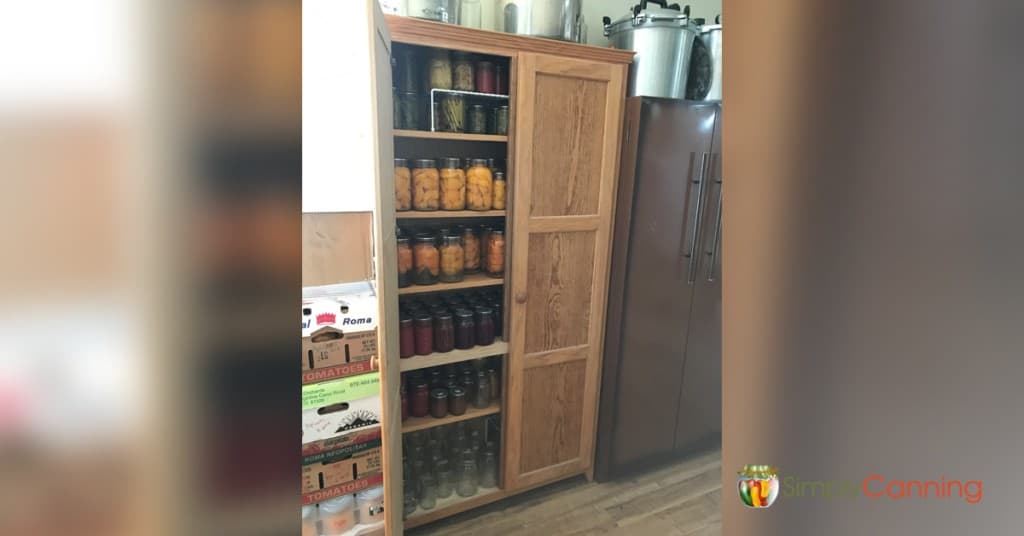
I have a nice pantry.. but nothing like those fancy, walk-in canning pantry rooms that we all drool over online. You know, the ones will walls lined with wood and jars all displayed so pretty!
First Things First – Prepare your Jars for Storage
- check the seals
- label your jars with content
- label your jars with the date
How to check the seals.
Before you store your home canning jars, you need to remove rings and double check that the seal is good. I lift the jar by the edges of the flats. The seal should support the weight of the jar.
Label those jars with contents
This can be as simple as writing “peaches” and the month/year on the lid. Or recording the recipe name if it is something you want to keep track of. (Examples: Type of jam, any seasonings added, etc.) This way, when you open the jar and find you want to make that recipe again, you’ll remember what was in the recipe.
Sometimes, home canning jars look the same but have different contents (for example, jam). Apricot and peach jam look pretty close, as do blueberry and blackberry. Maybe you had specific apples in your applesauce and you want to remember so you can get the same apples next year.
Label the jars with the date of processing.
Dates are also a really important detail for rotating your stock of full home canning jars. When you start canning again next year, you need to keep the previous year’s jars to the front so they get used first. If you find some jars are lost in the very back of the pantry, you will easily know if they are older or newer if you have labeled them with at least the year. I suggest month and year.
How to Store Canning Jars. What is required?
Here are some things to consider when deciding where to store your full canning jars:
- Temperature is best between 50-70 degrees F. Not too hot, and not too cold. This is a guideline–a few degrees won’t hurt either way, but 50-70 degrees is the ideal.
- Freezing is not good for your home canning jars! The most obvious reason being the jars may break. But it could also be the contents will freeze and swell enough (food expands when it freezes) that it will break the seal and you don’t notice. Another good reason to store filled jars with the rings off.
- High temperatures will cause foods to spoil. Do not store home canned food in a shed or other area where the temperature will rise in the summer heat. You can store your jars in a garage if it is climate controlled in some way, to avoid extremes of heat in the summer and cold in the winter.
- Direct sunlight is also not a good idea. Your jars do not have to be stored in complete darkness, but the less sunlight, the better. Sunlight will cause foods to fade and loose nutrition. So if they are in a bright room unprotected, at a minimum cover them with a dark tablecloth or something to keep the light out.
- Moisture is also not good. Don’t store jars in an area that may get damp. It may corrode the lids and cause them to unseal. Areas like a basement utility room or such may get too humid, especially if you live in a humid area.
My Home Canned Food Storage Systems
I think some people may assume since I’m the “canning lady,” I have one of those beautiful walk-in pantries with shelves to the ceiling. Nope. I do have a walk-in pantry…but it is one step in. The shelves are to the ceiling, but not near enough to store all the things. So I improvise. 🙂
I’m including information on what I have now…compared to what I had back in my younger days. My canning storage area changes from time to time, so if you came to my house today, you’d probably find I store my jars in some other way. Just do what works!
Everyone’s situation is different. My goal here is to inspire ideas for your storage solution. You may or may not do the exact same thing as I do.
If you are like me, you have a lot of home canning jars to store away. I don’t have a root cellar. (Oh, how I wish!) I have what most would consider to be a good sized pantry, but it is nowhere near large enough to store my jars.
Here are some of my storage areas. I get creative and work with what I have.
How I Currently Store My Home Canning Jars
I have a couple of upright shelving units. These are located in what we call the “mudroom.” It is a back entry just off my kitchen. The mudroom has a door that we keep closed in the winter so the room has no heat and is cool, but doesn’t freeze. In the summer, it has air conditioning, so it doesn’t get too hot.
The cabinets I use were purchased at yard sales, so they don’t match. But they DO hold lots of home canning jars. One is wood and one is metal. They are in a mudroom–functional fits right in the decor. 🙂
The wooden cabinet has movable shelves. I arranged the shelves so they are just tall enough to hold quart size jars.
In doing this, I ended up with enough spare room at the bottom to add an extra shelf! My husband is pretty handy, and he built and installed that extra shelf and added a little extra support for the other shelves.
Remember, the jars can be heavy when you have a lot on a single shelf. Try this… pick up a box of 12 filled quart jars. Then imagine that much and more on those shelves. Sturdiness is important.
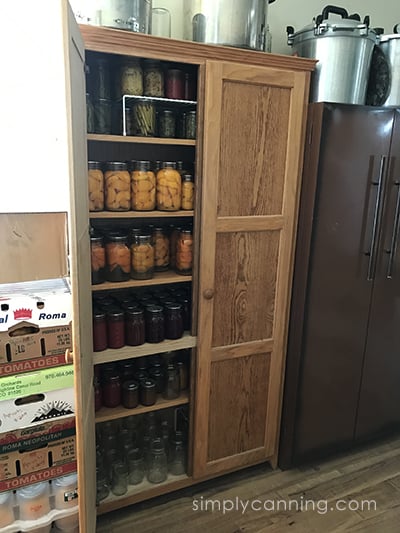
The other unit is a metal unit.
These shelves were not moveable, but it has small storage areas on the doors where I can stash extra boxes of lids, pectin, and other things. 🙂
You probably could get something similar at a Home Depot store if you wanted to just go get one new and not scrounge around at yard sales and auctions.
If you look closely, you’ll see some small white wire shelves. I used these as a rack in some areas so I can add extra pint jars and half pints.
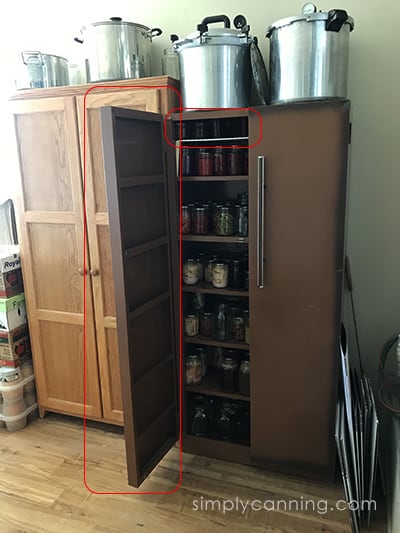
The nice thing about these cabinets is…the tops! If you are looking for places to store the large pots and canners that go with home canning, this is a perfect place.
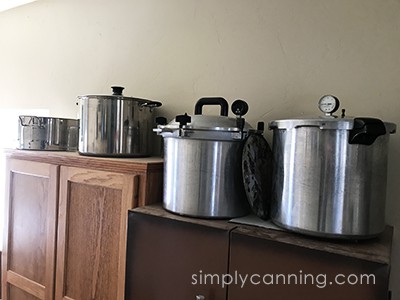
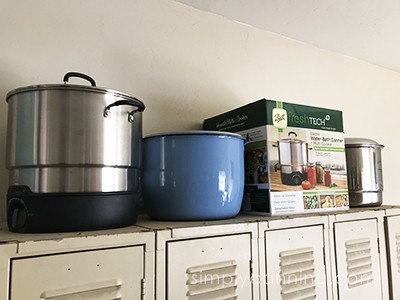
I have another, smaller metal cabinet that I use to store jams and jellies and a few gallon home canning jars on the bottom where I have some apple cider vinegar that is brewing right now.
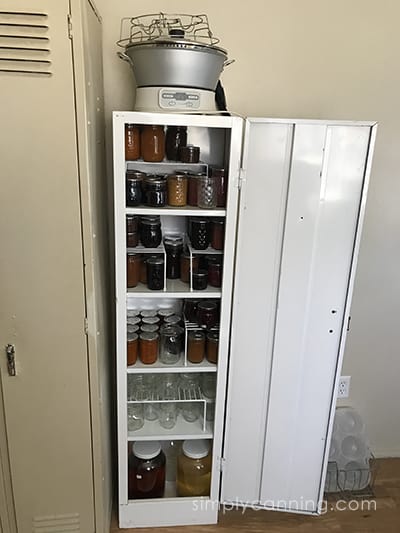
How I Used to Store My Home Canning Jars…
Heading down memory lane here!
This little guy is my youngest son. He’s taller than me now! And Married! Geesh where does the time go. But this day, I had him sorting home canning jars and arranging them according to type in the bottom of a cupboard.
Any shelves will work. This was in my kitchen so the room temperature was fine. Dark shelves when the doors are shut, room temperature, not too hot and not too cold.
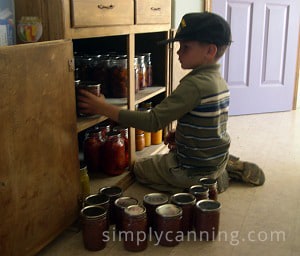
I used to also stock what I’d need access to in my grandmother’s cupboard in the kitchen. This cupboard is similar to the one above. This is where all the veggies were. Extra home canning jars were packed away in boxes. The cupboard was restocked every now and again.
I put down cloth napkins and dish towels to protect the wood shelves of this heirloom cupboard.
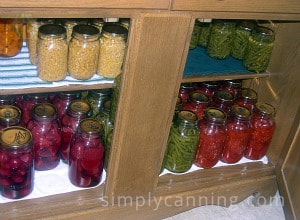
I picked these wire shelves up at a yard sale. (Love those yard sales!) They are an old potato chip bag display from the Frito guy. Each shelf is just barely tall enough to accommodate a quart sized jar, so it is a tight fit. I did store some quarts on this shelf, but it was not very convenient.
However…it was perfect for pint home canning jars and would hold quite a bit.
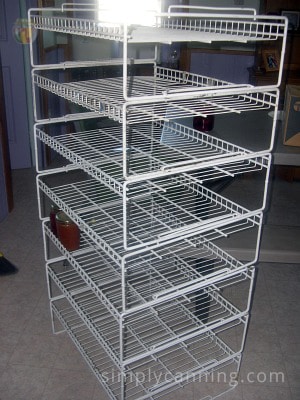
My favorite place to store jams, jellies, pickles, and other things in pint home canning jars was this vintage cabinet. Perfect for pints and half pints.
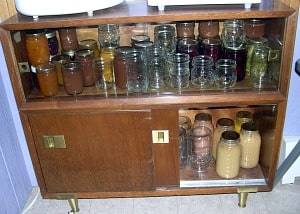
A Note on Using Boxes for Storing Home Canning Jars
I also store some boxes of home canning jars on the floor in our basement and some in our back entry/mudroom. Label the outside of the box so you don’t have to repeatedly open them when you want to restock the pantry. I use sturdy fruit boxes for this. The boxes are a few inches taller than the jars and sturdy enough to stack a few, and the weight from the boxes above don’t lay on the home canning jars below. The box holds all the weight from above. I generally don’t go over 4 layers high–that big box on top is empty, just stashed there by someone in the family.
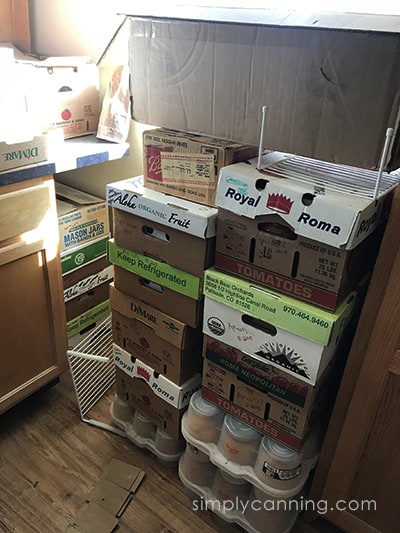
Notice I have a few Jarboxes as well on the bottom of the stacks. These are super sturdy and even better than boxes, though there is a cost involved.
One thing I want to suggest if you do this…put the boxes where you won’t forget about them. This food is for you to eat now, not to find 3 years from now in some remote corner of your house.
Storing Home Canning Jars: Tips & FAQs
Storing Home Canning Jars in an Extra Refrigerator
by: Rebekah (Texas)
“We have just moved into a temporary (for 1-2 years) smaller home that is short on storage space. Since the place we are renting comes with a fridge, we are storing our fridge plugged in the garage.
We were told to keep it full for energy efficiency, but since I’m not used to having a second fridge, right now it is completely empty.
I have been canning away this summer and I was wondering, is there any reason why I can’t store the items I’ve canned in the fridge? (Jams, tomatoes, peaches, green beans, tomato sauce.)Would the moisture be an issue? I can’t find any information on this online. I love your site and I am hoping you will know. Thank you! Rebekah”
Sharon’s Answer:
Rebekah, Since I have not done this myself, I asked your question on my Facebook page to get other opinions. I don’t know if you are on Facebook, but you might check it out.
The consensus there seems to be that moisture might be a problem. No one mentioned actually trying it themselves though.
I’d suggest keeping jugs of water in this extra fridge for storage. Someone on Facebook mentioned root crops or apples too. I hadn’t thought of that.
The expense of running the extra fridge kind of defeats the benefits of canning. You can just store on the shelf, but since you want to run the fridge anyway, that might not be an issue for you.
Another thought is you really don’t want any home canning jars to freeze. I did actually experiment with this. I also have an empty outlide fridge. Last winter I wondered if a jar would be protected from a freeze so I put a jar of water in it to see what would happen.
For somewhat cold weather. The type of cold that would leave a skim of ice on my animals water, the fridge worked. However when it got down to almost zero, the jar of water froze.
Can you just leave the refrigerator unplugged until you have more to fill it? If you do this, be sure and leave the door cracked open a bit. Sometimes, they will get stinky inside if there is any moisture left.
Also be very sure the door can’t close on someone inside. Children might think it is a fun place for hide and seek if it is not on and cold. I’ve heard stories of suffocation. Hope that helps.
Here are some comments from the gals who responded on FB:
Donna – “I’ve known of second-fridge storage users that stored water (as mentioned) and also would make up freezer jams, freeze them up and then store them en-masse in that 2nd fridge where they had slow slow defrost – also a great place to store root veggies and apples for longer periods.”
Julie – “I wouldn’t do it because it might cause it to spoil with all the excess moisture and make you sick. And it could alternate the taste as well. I would say if you’re going to put it in jars, put it in jars; if you’re going to put it in the fridge, freeze it to be on the safe side.”
Holly – “Not a good idea. Instead, have some cleaned milk jugs in the fridge with water. It is a great way to fill the fridge and store water for a emergency. If our electric goes out, we have a well, no water. And if you need more fridge space (party, holiday food), water jugs can be taken out easily stored out of fridge.”
Darice – “My grandma had two fridges she kept in her basement–one running and one not–from the 1950’s. She did keep canned goods in both and never had a problem with them. She labeled them all with the month and year they were canned. As long as the seal wasn’t broken, the food was fine. This was way before fridges had defrost too.”
Transporting Home Canned Food in an RV
by: Bobbie (Canada)
“Thank you for this site! Very informative, & I hope my unusual question can be answered here. I haven’t canned anything for years & years (not since helping my Mom on the farm as a child), but would like to start again using more modern, safer methods (yup, I’ve done my research).
The problem is, I live, work and travel in an RV (a lifestyle I love that suits me as I have my own company), and store things that don’t fit in the RV in a cargo trailer I tow behind.
The home canned foods would have to be stored in the trailer. I can make sure the jars are stable, cool, dry and dark (like a pantry or cellar), but the big question is, will the constant movement break the seals? I can only avoid so many potholes and manhole covers, but taking into account head space, that would likely result in ‘sloshing’. Not safe?
I hope I will be able to can, in order to take advantage of seasonal fruits and vegetables I find along the way, and enjoy the type of ‘farm cooking’ my mother used to provide. Any advice would be welcome. Thanks again. Bobbie”
Sharon’s Answer:
Hi Bobbie, You are right. This is an unusual question. I love it! I don’t see sloshing of your food as a problem. The less shaking, the better, but as long as you are not off roading, I think you’ll be fine. As always, be sure and check the seal before you open and eat your food.
My cautions would pertain more to temperature. You don’t want your home canning jars to freeze, and you don’t want them to get too hot either.
The ideal temperatures to store jars is between 50-70 degrees F. You need to be aware of the temperature in your trailer. Great question.
Home Canned Items & Traveling
“We drive truck across country and I bring home canned items all the time. The one big problem is that the hot water bathed items seals pop going across high elevation. I learned that the hard way. We have no problems at all with pressure canned items.”
Thank you! I appreciate a first hand experienced account. I bet the elevation might be an issue with shipping home canned items as well. ~Sharon
Keeping My Jars Cool
by: Julie
“Hi there. I love all your advice and ideas, I get your blog. We are going to be going full-time rving and the only place to keep my jars of canned meat is under the seats in the dining room. Is there something I can cover that would keep them cool? All I can think of is an old heavy rug. LOL”
Classic or Wide
by: Anonymous
“We will be taking home canned with us this winter to the southwest. It has occurred to me that jars rubbing or banging together could compromise the seals. So I’m concentrating on original jars so the lids don’t touch and putting jars into old socks like I do some glasses. We are looking forward to some ready-to-go meals without all the prep when we overnight.”
How Do You Store Your Home Canning Jars?
I asked if anyone else had other storage solutions for their home canning jars. Here are a couple of ideas submitted:
From Kris – “Before I converted one of my bedrooms to a pantry, I lined my hallway on one side with wire cube storage shelves. The jars were too heavy for them, of course, so I emptied out closets and cabinets and stored the contents on these wire shelves. Towels, sheets, board games, books, music, and so forth. Before that, I had the jars in boxes under my bed. Not too creative, but it worked.”
From Grannie – “When we lived in a tri-level, we had very little space for storage, and we had seven of us so I canned quite a bit. This is what we came up with: We put the jars in boxes and stored them under the children’s beds. We gave them a list for their room so that they would know what was under their particular bed. All I had to do was say, ‘I need a quart of green beans’ or whatever it happened to be. Empty jars went back out into the garage; worked for us until we moved into an old farm house with a fruit cellar.”
From Randee V. – “I store mine in see-through plastic tubs. Sorted by both size and whether they are regular or wide mouth. Any leftover lids and rings and my canning tools are stored in another.”
From Linda Y. – “I flip the clean jars upside down on the shelf that I took the full jar from…”
From Robin M. – “I use cardboard wine boxes. Ask your local liquor store. They have dividers to keep bottles safe. Great to store flip flops and sandals in too. These are great for the pint & 1/2 jars. Can’t beat a freebie.”
From Kimberly A. – “I have shelves devoted to canning jars, and I try to keep as many possible in the original boxes with the plastic on, in case of breakage. Nothing like cleaning moldy slime off of a shelf when a jar breaks and sits there leaking for weeks.”
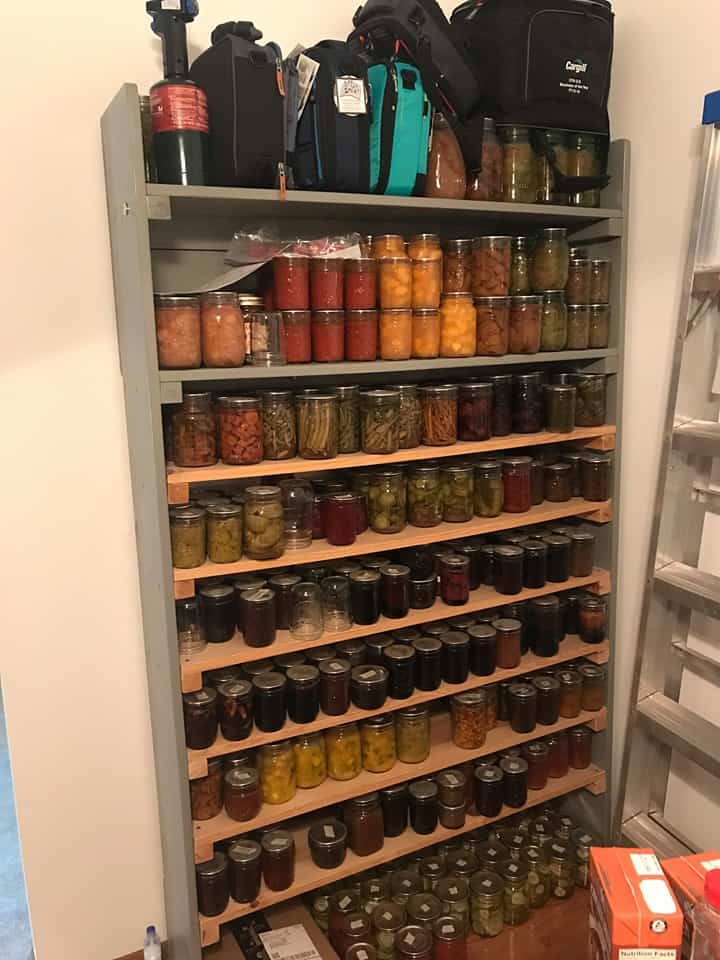
From Cathy A. – “Sit back, children, while I tell the tale of how my ‘canning shelves’ came to be. Back in the day, I lived on North Campus at The Ohio State University. If you lived in a triple or quad, you had 2 built in desks and 1 or 2 portable desks. The portable desks did not come with overhead shelves. So my dad and I ventured to the lumber yard and secured some lumber.
Out of that lumber we designed and built a two-shelf, free standing bookshelf that fit around the portable desk. I painted it grey because, Ohio State. It served me well for my 4 years there, holding many stacks of textbooks. However, time and change happened and when I moved to apartments and condos, it got shoved unglamorously to the back of my storage room.
One day, however, when I was digging for something in my storage room, it struck me that the poor, disused bookshelf could be reborn. My husband and I took some measurements, there was a design plan sketched somewhere on a piece of junk mail, and we went to the big box home improvement store (the green one) because lumberyards are a thing of the past in many places.
Additional shelves were built at the height of a 1.5 pint jar. The top two shelves (originally designed for books) and the bottom shelf (which is really the floor) are tall enough for quarts. It is not fine craftsmanship, nor is it perfect in design and execution, but it it sturdy and stout and puts all my jars where I can see and find them. And…it’s screwed to the wall…because I don’t take chances.”
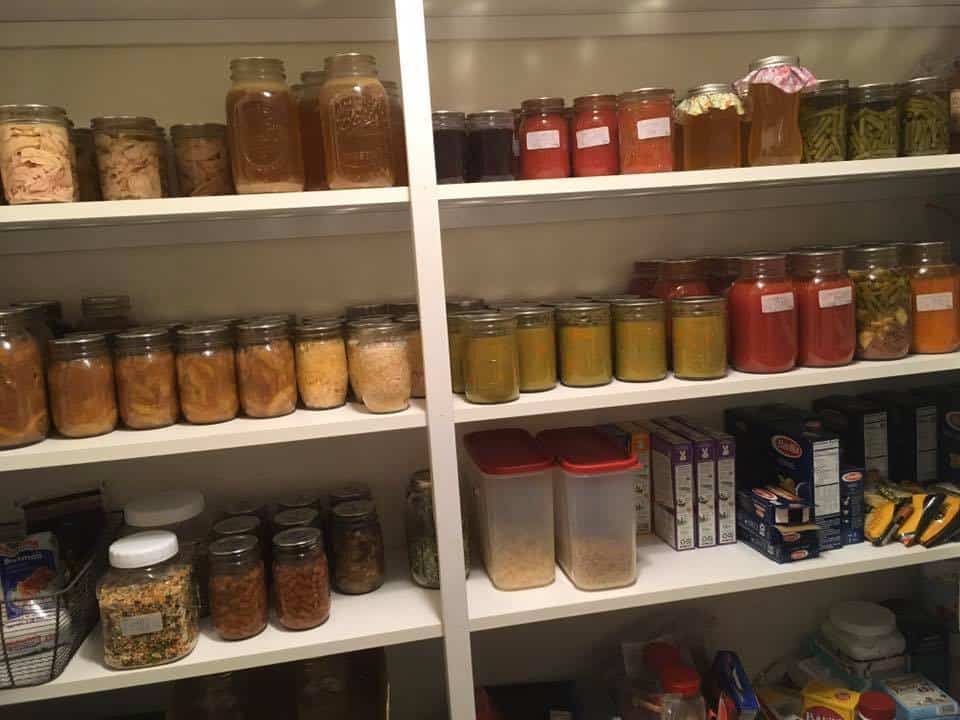
From Julie D. – “I am very fortunate, my home has a real walk in pantry with floor to ceiling shelves. I am able to store all of our food as well as my canners, roaster, grinder, slicer, mixer and such. I do keep most of my extra empty jars in the attic. Other homes I have lived in had very little storage. I have used closets, cabinets and basically any place I could find to store my jars. Here is a picture of part of one wall of my pantry.”
What Causes Canning Jars to Not Seal?
The occasional seal failures happen. It might happen once or twice a year. It is not an issue unless it is happening a lot or if many jars in a single batch are not sealing. If it is more than a jar here or there, let’s see if we can figure out the issue.
I’ve got a series of video posts on why canning jars don’t seal and how to avoid the problem here.
Related Pages
How to Use Canning Jars Properly – What types of jars are safe for canning? What sizes to jars come in? and more questions.
Love Vintage/Antique Mason Jars? Learn if those Mason jars are still usable or just decoration.
Pin This to Find Later!
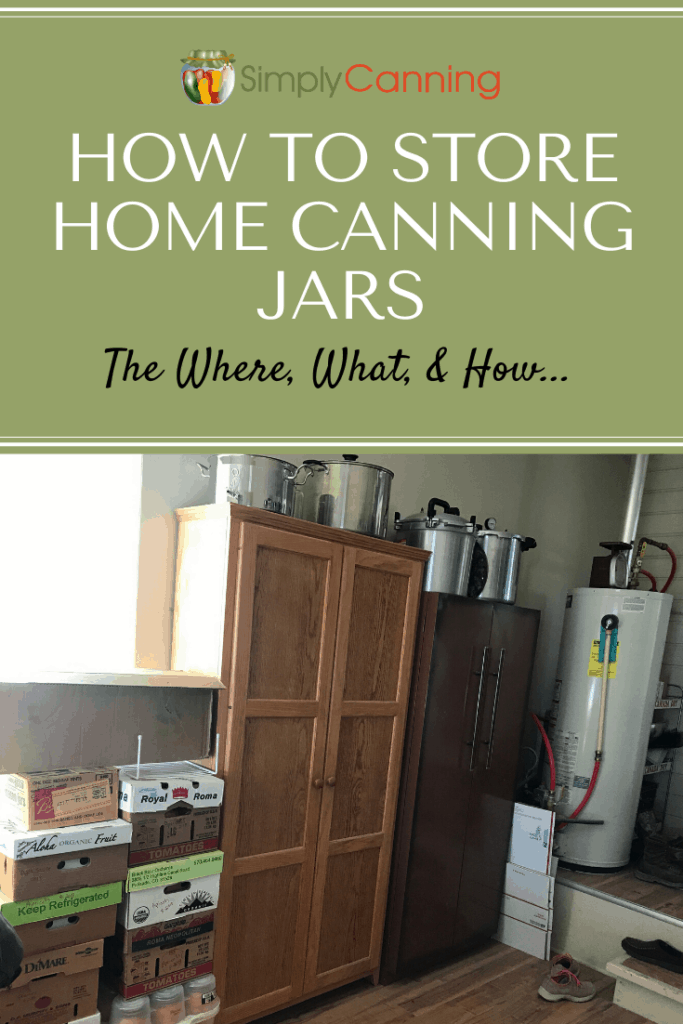

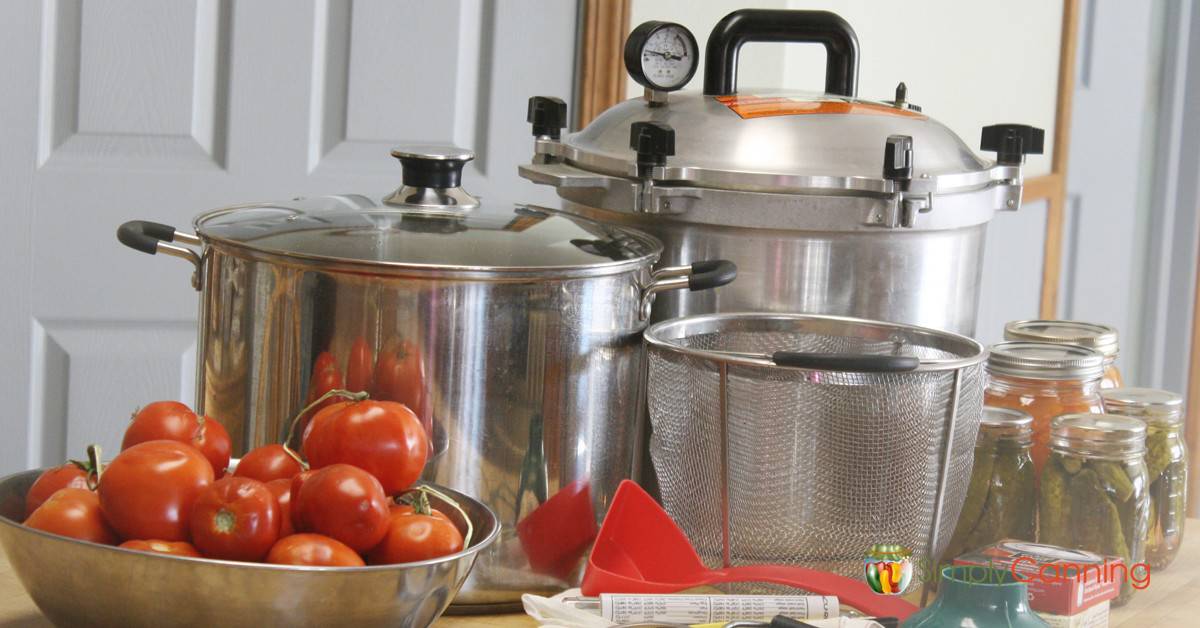
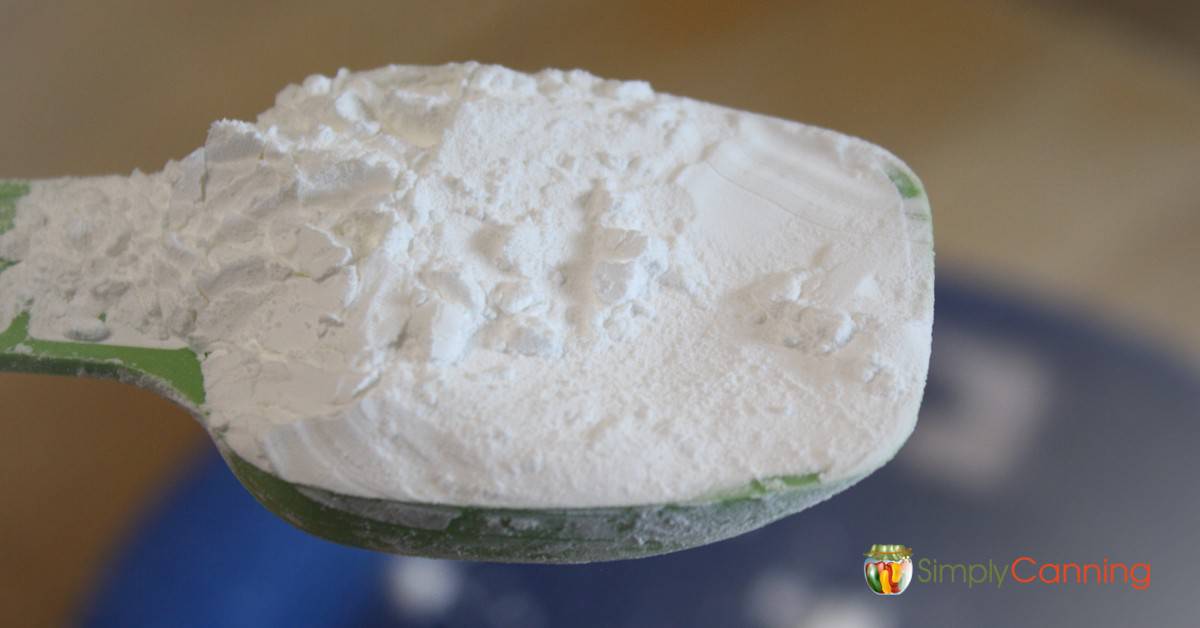
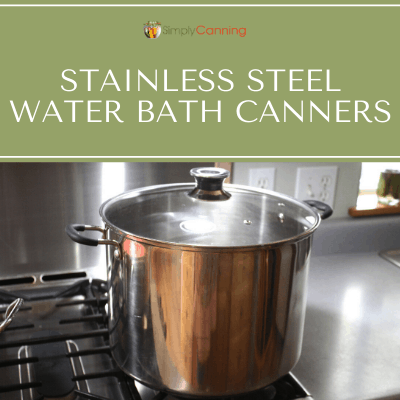
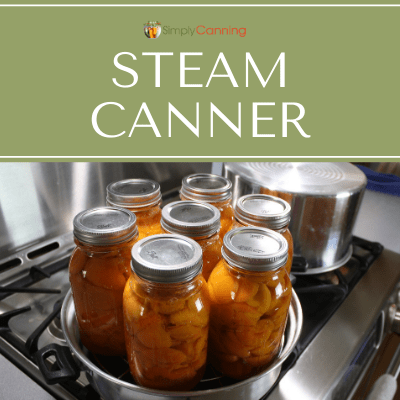
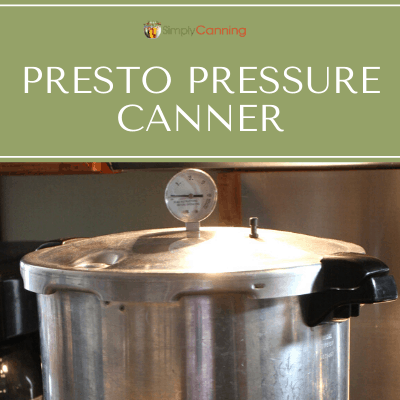
What do you suggest if you live in a hot area? I’m in Florida and during the summer my house is air conditioned to 80F.
Well, 80 degrees is on the warm side but if that is all you have then you just make do. I’d suggest keeping them in a basement or somewhere that you know is the coolest you can manage. Then don’t can more than you’d use in a year or so. I recommend that any way but for your food it will decrease in nutritional value quicker with the warm temps so I highly recommend it for your situation. (I don’t think I’d survive Florida summers! Ack. I thought it was hot here. 🙂 )
Can you store glass canning jars in a broken fridge outside facing morning sun only?
I’m assuming you mean filled canning jars with food in them. 🙂 I’d say that the sun is going to affect the jars even if it is morning sun only. To fix this you could throw a dark blanket over them to block the sun. The bigger issue that you’d need to be aware of is moisture and temperature. I go over the storage recommendations here. Keep them dry and at a reasonable temperature.
Nice article! However, if you use a free standing cabinet for storage it’s very important to anchor it securely to the wall. If it were to tip over, the weight would pose a hazard. This is especially important in earthquake country.
Very True. I actually did have the tall cabinets screwed to the wall. This is doubly important if you have kids or there may be kids come into your home. If they try to climb on the shelf… it could be dangerous.